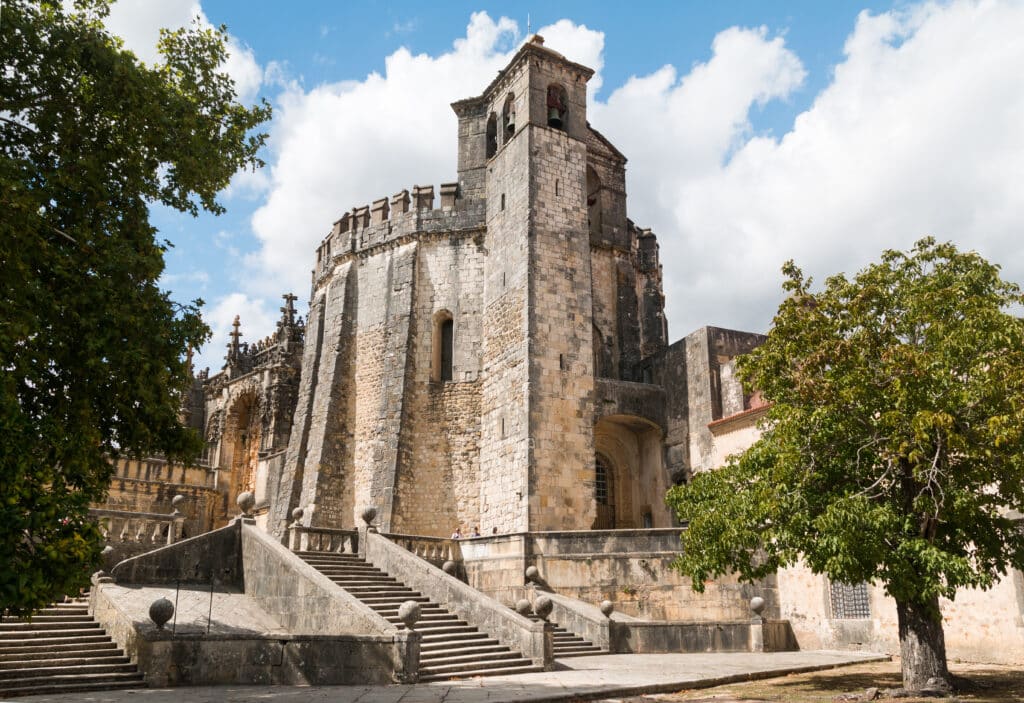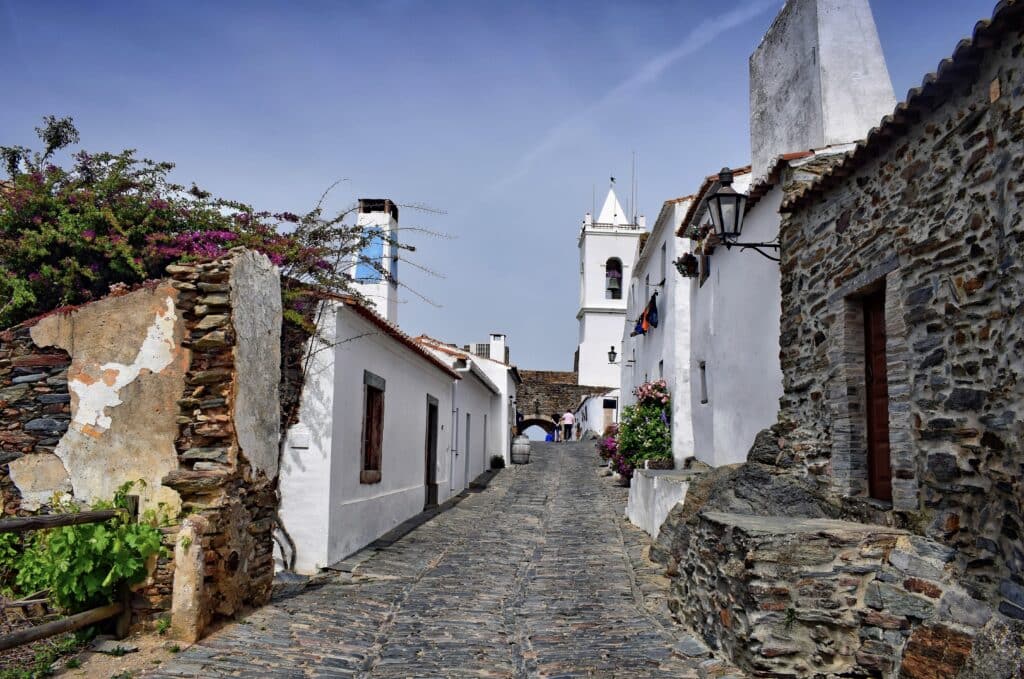The Legacy of the Knights Templar in Portugal: Master builders and protectors of the realm
by Romain Nugou

During the 12th century, the Iberian Peninsula was a land of regular conflict between Christian and Muslim forces. It is only natural that we see the Knights Templar join the military effort, as they did in the Holy Land. Their presence in Portugal can be traced from 1128 until their dissolution two centuries later. A valuable partner of the Portuguese Crown, they played a key role during the Reconquista and helped to create a defence system securing the border of the young Christian kingdom against Al-Andalus. Unlike elsewhere in Europe, the order suffered no persecution at the time of its dissolution in 1312, its members and property in Portugal being instead transferred by King Denis (1279-1325) to the Order of Christ, with the approval of Pope John XXII (1316-1334). Created specifically for this very purpose, it later supported Portugal’s maritime explorations in the 15th century, counting Henry the Navigator, Magellan and Vasco da Gama as some of its most preeminent members.
The Templar stronghold of Convento de Cristo
In 1139, King Afonso of Portugal bestowed upon the Knights Templar the lands surrounding Tomar, including a dilapidated castle. Situated near the border with the Moorish territories, the castle guarded an important road connecting Lisbon to Coimbra and offered fertile lands ripe for settlement. Recognising the strategic importance of the location, Gualdim Pais (1118-1195), the Master of the Templars in Iberia, embarked on an ambitious project with the construction of a new castle. Work commenced in March 1160, drawing inspiration from the castles Pais had witnessed in the Holy Land. The resulting structure featured innovative design elements, most notably the keep, one of Portugal’s oldest. During the Reconquista, the Castle of Tomar became a critical part of the defensive network, securing the border against the Moorish threat. This border, during the mid-12th century, ran along the banks of the Tagus River. The Convent of Christ, later chosen as the Order’s headquarters, was both a fortress and a testament to the Templars’ artistic vision. Its architecture, a blend of Romanesque, Gothic, Manueline, and Renaissance styles, reflects influences from the Dome of the Rock and the Church of the Holy Sepulchre in Jerusalem.

The fortified village of Monsaraz
Perched high above the River Guadiana, the medieval walled town of Monsaraz stands as a timeless sentinel on the border with Spain. Its history stretches back to pre-history, and hundreds of megalithic monuments whispering tales of ancient settlements can be found in the area. Monsaraz fell under the sway of Muslim forces during the 8th century, a time when it was known as Sharish, after the Gum Rockrose plant that flourished there. The name evolved, morphing from Xaraz to Monte Xaraz and ultimately to Monsaraz, meaning “the hill surrounded by Gum Rockrose”. The town’s strategic location made it a vital fortress, and in 1232 King Sancho II (1223-1247) reclaimed it, and placed it under the guardianship of the Knights Templar. They were tasked with establishing a garrison to defend the border. Today, the town’s narrow streets, lined with whitewashed houses, lead to its 14th-century castle. Ascend the ramparts and be captivated by panoramic views: to the east, the Guadiana River flows along the border with Spain, and to the west, the vast plains of the Alentejo stretch out before you.

Almourol, the Castle on the river
Nestled on a secluded islet on the Tagus River, the Castle of Almourol is a testament to centuries of history and legend. Its foundations are believed to lie upon the remnants of a primitive Lusitanian castro, later conquered by the Romans. The castle passed through numerous hands, from the Alans to the Visigoths and ultimately the Moors, before falling to Portuguese loyalists in 1129. It was then entrusted to the Knights Templar, who began its reconstruction in 1171. The castle served as a formidable stronghold during the Reconquista, but its strategic importance faded as the Moors retreated. Over time, it fell into disrepair, only to be resurrected during the 19th century by the romanticism movement. Today, Almourol’s majestic presence and its central keep, towering above surrounding curtain walls and nine towers, is a demonstration of the Knights Templar’s architectural prowess, drawing inspiration from their masterpieces at the Castle of Tomar and in the Holy Land. The castle’s remote location, accessible only by boat, adds to its mystique, fuelling tales of enchanted Moorish women and damsels in distress saved by valiant knights.

The presence and actions of the Knights Templar, as well as their building skills, have had an enduring effect on Portugal, its history, and its landscape. Most of what they built still stands today along the border with Spain. The Order of Christ was secularised in 1789 by Queen Maria (1777-1816) and eventually abolished in 1910 with the end of the Portuguese monarchy. It was revived in 1917 as a mere order of merit and can be conferred for outstanding services to the Republic. These days, its Grand Master is the President of the Portuguese Republic. The legacy of the Knights lives on.

Article images
Castelo de Almourol by Vitor Oliverira, CC BY-SA 2.0 https://creativecommons.org/licenses/by-sa/2.0/ via Flickr.com
Tomar Convento de Cristo Rotunda dos Templários – by Daniel VILLAFRUELA, CC BY-SA 4.0 <https://creativecommons.org/licenses/by-sa/4.0>, via Wikimedia Commons
Monsaraz Jocelyn Erskine Kellie, CC BY-SA 2.0 https://creativecommons.org/licenses/by-sa/2.0/ via Flickr.com
Castelo de Almourol Vitor Oliverira, CC BY-SA 2.0 https://creativecommons.org/licenses/by-sa/2.0/ via Flickr.com

 Silver Coast and Golden River: Art, Architecture & Culture of Portugal 2025
Silver Coast and Golden River: Art, Architecture & Culture of Portugal 2025